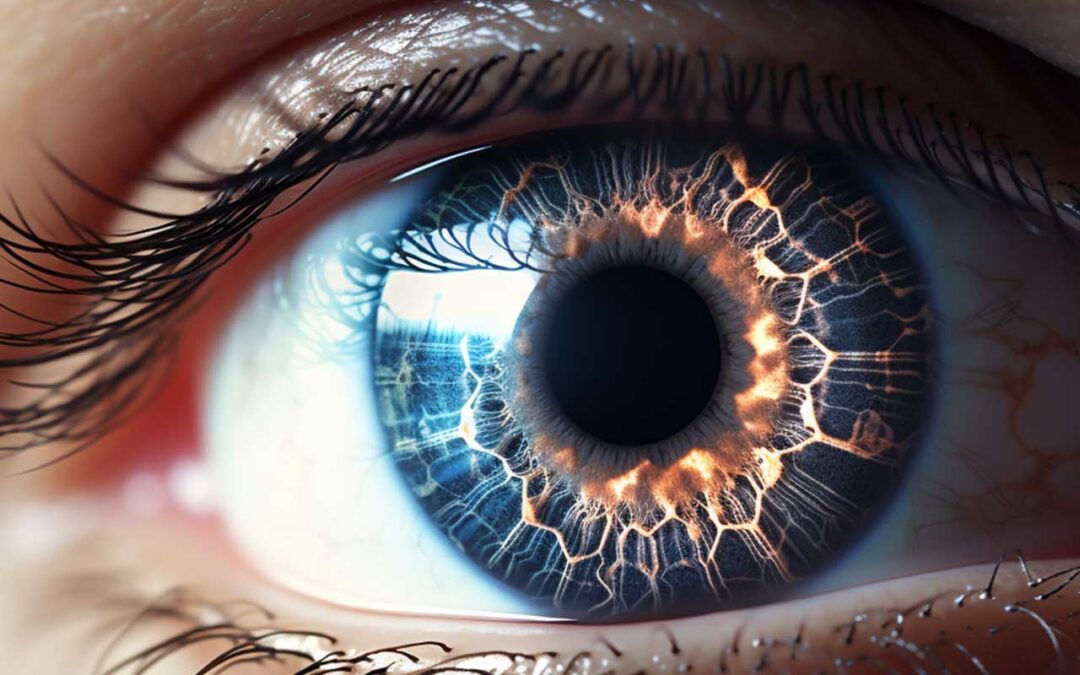🧬 NMN (Nicotinamide Mononucleotide) & Vision
🔬 Scientific Evidence (Animal Studies)
1. NAMPT‑deficiency & photoreceptor rescue in mice
-
In mice genetically lacking Nampt—the enzyme needed for NAD⁺ production in rods/cones—retinal degeneration and vision loss occurred. Regular NMN injections restored NAD⁺ levels, rescued retinal structure, and improved vision, even in models of light-induced damage and diabetic retinopathy (pubmed.ncbi.nlm.nih.gov).
2. Protection after retinal detachment
-
In a 2020 mouse model, inducing retinal detachment caused oxidative stress and photoreceptor death. NMN treatment (250–500 mg/kg) reduced cell death by 53–71%, preserved retinal layers, lowered inflammation, boosted antioxidants like HO‑1, and increased NAD⁺/SIRT1 activity (pubmed.ncbi.nlm.nih.gov).
3. Broader NAD⁺ context in aging eye
-
Reviews highlight NAD⁺ decline as a hallmark of aging retina. Boosting it via NMN supports mitochondrial function and protects against retinal neuron degeneration (onlinelibrary.wiley.com).
✅ Interpretation
-
Animal models consistently show NMN protects photoreceptors and retinal ganglion cells under stress (like injury, detachment, DR, aging).
-
Mechanism: increasing NAD⁺ → activating sirtuins (SIRT1, SIRT3/5) → enhancing mitochondrial health, reducing oxidative damage and inflammation.
-
Caution: No robust human clinical trials yet with vision endpoints. These effects remain unconfirmed in people.
🌿 Resveratrol & Vision
🔬 Scientific Evidence
1. In vitro & rodent studies on AMD and oxidative stress
-
Resveratrol protects human retinal pigment epithelial (RPE) cells from H₂O₂-induced oxidative damage by boosting antioxidant enzymes (SOD, GPx, catalase) (nmn.com, pmc.ncbi.nlm.nih.gov).
-
In mouse/rat models, it reduced photoreceptor death under light-induced stress, downregulated pro-apoptotic pathways (like AP‑1/c‑fos), and limited retinal damage (sciencedirect.com).
2. Photoreceptor protection in genetic/thyroid-driven models
-
In mouse models of inherited blindness (e.g., Rpe65⁻/⁻) and thyroid hormone–induced damage, resveratrol preserved retinal layer thickness, reduced oxidative stress and inflammation, and limited apoptosis (mdpi.com).
3. Glaucoma and optic nerve protection
-
A recent meta-analysis of 30 animal studies showed resveratrol increased survival of retinal ganglion cells, preserved retinal thickness, upregulated SIRT1, and reduced inflammatory/apoptotic markers in glaucoma or ischemia models (frontiersin.org).
4. Anti-fibrotic effect on RPE cells
-
In rabbit/mice cell models, resveratrol inhibited epithelial-mesenchymal transition (EMT) of RPE cells by activating SIRT1 and deacetylating SMAD4—potentially limiting scarring in proliferative vitreoretinopathy (nature.com).
✅ Interpretation
-
Resveratrol shows broad protective effects in retinal and optic nerve models: antioxidant, anti-inflammatory, anti-apoptotic, anti-fibrotic, often via SIRT1 activation.
-
Still, almost entirely preclinical: direct human trial evidence on vision outcomes is lacking.
-
Also, oral resveratrol suffers from low bioavailability (≈0.5%) (frontiersin.org, sciencedirect.com, en.wikipedia.org), which may limit effectiveness in humans.
🧠 Clear Summary Explanation
NMN and resveratrol may support eye health by:
-
Boosting cellular energy: NMN raises NAD⁺, supporting mitochondrial metabolism and DNA repair.
-
Activating protective enzymes: Both compounds activate SIRT1 (and related sirtuins), which regulate stress responses, inflammation, and cell survival.
-
Reducing harmful stress: They both lower oxidative damage, neuroinflammation, and apoptosis in retinal cells.
NMN has strong evidence in mice showing it can prevent photoreceptor loss in stress models such as detachment, light damage, diabetes, or genetic dysfunction.
Resveratrol shows protective effects across multiple retinal tissues—RPE, photoreceptors, optic nerve—especially in preclinical models of AMD, glaucoma, inherited or injury-induced degeneration.
Crucially, neither is proven in humans to improve vision or reverse existing damage. Their benefits remain speculative until clinical trials with vision-related outcomes are conducted.
🎯 Final Takeaway
| Aspect | NMN | Resveratrol |
|---|---|---|
| Mechanism | NAD⁺ precursor → sirtuin activation → mitochondrial & DNA repair support | Polyphenol → SIRT1 activation + antioxidant/inflammatory modulation |
| Evidence | Strong rodent data: rescued retinal degeneration, prevented cellular damage | Strong rodent & cell line data: protected RPE, photoreceptors, RGCs |
| Human data | No vision-focused trials yet | Limited to cell bioavailability studies; no trials on vision outcomes |
| Practical use | Promising for optic protection, needs confirmation in humans | Low absorption may limit benefits; formulations improving delivery being studied |
👉 In short: Both are promising neuroprotective agents at the cellular level for eye health, but neither has proven efficacy in improving human vision—until now.

